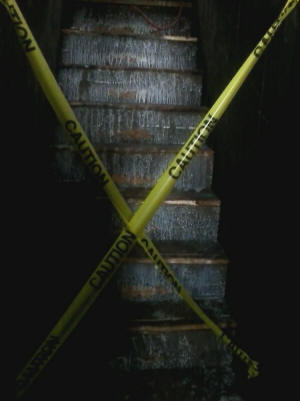|
 Bishop shared that the Cumberland Presbyterian Churches were
looking to build a school in the northern states around the time of
the end of the civil war. Founders looked at various sites around
Lincoln, but on a dreary day, as they viewed the site ultimately
chosen, the sun suddenly came out and a train passed by, helping the
group decide it was the place to go. Bishop shared that the Cumberland Presbyterian Churches were
looking to build a school in the northern states around the time of
the end of the civil war. Founders looked at various sites around
Lincoln, but on a dreary day, as they viewed the site ultimately
chosen, the sun suddenly came out and a train passed by, helping the
group decide it was the place to go.

Bishop provided a timeline of the events leading up to the opening
of the campus.
- December, 1864 - Site Selection
- February 6, 1865 – Charter granted by the Illinois General
Assembly
- February 12, 1865 - University Hall Ground Breaking
- March 4, 1865 – President Lincoln notified by letter [from
Colonel Robert Latham] of the founding of the school and that it
would be named in his honor.
- April 14, 1865 – President Lincoln Assassinated
- June 6, 1865 – Plans for University Hall are completed by
George Gayle.
- August 24, 1865 – Basement windows are completed.
- September 14, 1865 – Cornerstone laid
- June 1866 – Exterior mostly complete
- November 1866 – Lincoln College opens its doors to first
students

The building is known for its architecture, which is
Italianate style. It also has hipped roofs with corbel supported
extended eaves, a Cupola, Arch-headed and Palladian windows,
plus a Joliet limestone base. There are clay exterior and
interior structural walls and Bishop estimates that it has
approximately 12,000 bricks that were manufactured locally and
placed piece by piece with a pulley. It also features exterior
wood ornaments - pediments, cornice and corbels. Years ago, the
cupola was used to house an astronomical telescope.

Beaver shared some of the social history of the building in the
20th century. He told of one incident of a student prank in
which a “borrowed” cow was taken to the third floor. The
students left the cow up there where a janitor discovered it
running around the next morning having left a nice little “mess”
to be cleaned. In order to get the cow down the two flights of
stairs, it had to be blindfolded.
The third floor once housed science classes, a dance studio, and
one professor’s office. Beaver stated that students in these
courses had to be dedicated students to climb all those stairs.
In the 1950’s, a snack bar was put in the basement and was named
the Jefferson Davis Memorial snack bar. The story goes that
then-president Dooley acted like he disapproved of the name, but
reportedly found it somewhat amusing.
It was also during that era that the first Grand Soiree was
held. Beaver described it as an elegant affair with a string
quartet playing, a “tree made of fruit,” and cake made from Mary
Lincoln’s recipe.
In 1866, Lincoln had a population of 3,000 people. Within a
couple years, the school had 190 students. It was a four year
school until 1929, when Millikin University was founded. Most
students lived in nearby houses in the early years.
In the 1880’s, the first baseball team was started.
There were a few calamities over the years that caused minor
damage to the building. For example, there was a fire in the
1930s that was contained to the basement. In 1968, a tornado
damaged the cupola—the high winds blowing it off the building,
onto a car. In 1969, when the nearby administration building
burned, it was only due to the direction of the wind that
evening that University Hall was not affected by the fire.
 In 1973, University Hall was put on the National Register of
Historic Places—the first place in Lincoln to be placed on the
register.
The Present
Plans are now being made for renovations as presently the
building needs several repairs and is somewhat underutilized due
in part to accessibility issues.
Bishop described the current conditions of each floor:
The basement is currently used for storage due to the
accessibility issues. The public restrooms and windows need
attention. In addition, a sprinkler system is needed.
[to top of second column] |

The first floor is fully occupied and used for administrative
offices, but some of the stairs and risers are loose. There are also
some anachronistic elements such as railings that do not match the
time period.
The second floor is also underutilized as the classrooms on that
floor are no longer being used and it is not accessible to some. The
ceilings are also low—described as “headknockers” since taller
people sometimes hit their heads on them.
The third floor, which formerly housed a dance studio, is
underutilized due to its lack of accessibility. It also contains
anachronistic elements such as wood paneling.

The attic has limited utility space and is currently locked off and
enclosed. It could be used for air conditioning the whole building.
In the attic, there are also several student autographs dating as
far back as the 1890s.


Finally, the cupola is also underutilized partly because the stairs
are very steep with six to seven inch treads. This area also has
some historic elements with student autographs.

On the outside, the masonry needs to be replaced in some areas as
much of it is original and deteriorating. Site drainage is also an
issue since the building has settled over the years, calling for
regrading of the site. The wood trim on the outside also needs
renovations. Many of the windows are original, with a few
reproductions, but the windows are like a museum of glass
manufacturing with curved glass in some and glass crown disc in
others.
The Future
At present, the question is how to make the building better utilized
and more accessible. When considering accessibility, those deciding
how to renovate noted that chair lifts are not practical due to the
many flights of stairs. Putting an elevator on the outside of the
building is not workable either because they want to protect the
outside of the building. Bishop said they need to connect an
elevator shaft that starts in the basement, though it would not be
able to go all the way up to the attic or cupola.
The building cost around $30,000 to build 150 years ago, the money
raised through subscriptions from people such as town developers
John Gillette and Colonel Robert Latham. William Scully and trustee
David Harts contributed quite a bit of funding over the years,
especially during difficult financial times. Since the needed
renovations are likely to be costly, the college is working on
getting grants and matching grants for funding.
Though the renovations are not yet in progress, when they are
completed, they will help preserve a building that has been a big
part of Lincoln College’s history.
[Angela Reiners]
 |